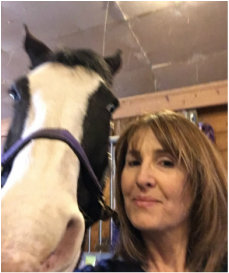
It is fair to say that my ‘special interests’ are centred more on people than things. One of the ways I have learnt to cope with my impairments is to monitor others around me, and learn how to ‘fit in’ through imitation. As I have gotten older this has moved into the more complex realm of Psychology, and understanding why people behave the way they do. I figured people are no different really to learning how to use a computer; we all have inputs and outputs. I tackle my own thoughts, feelings and behaviours with the same sort of obsessive rigour as scientists trying to find a particular vaccine in the midst of a pandemic, which is how I ended up doing a PhD studying autism in females.
I wanted to know if I was alone, why it took me so long to get a diagnosis, and how I had managed to adapt so well socially despite my impairments. What I have learnt so far is that there are hundreds of females out there in the same position as me, all wonderfully unique and kind human beings with bucket loads of empathy; not what the media teaches us autistic individuals look like! It can be tiring being so personally invested in the research that I am doing, it feels like I cannot get away from autism; at work, at home, it is present in everything I do and think. It also requires a certain amount of stepping back and objectivity, a skill I am perhaps yet to master fully. The condition lends itself to quite an egocentric perspective, so I am having to consciously think ‘can I really speak for everyone here?’ and learn about the different experiences other people with autism have had.
Whilst the majority of feedback I have received from the work has been positive, it appears you cannot become too big on the internet before trolls start attacking you, which has been the hardest hurdle to face (including all the research ethics forms I have had to fill in!). Being told by people who do not know you and have only read an article that you are a fraud and cannot possibly have the condition hurts, especially when you came to the club quite late and have lived with those doubts all your life. If the research was not so personal to me then perhaps I would be able to take these knocks on the chin, but that is the nature of the beast.
Overall doing my PhD on my own condition has opened up many doors for me, in understanding myself and those around me. From this work I created my own blog (www.aspertypical.com) and a group specially dedicated to women on the spectrum. I think it is vital that more research on autism is led by autistic individuals, as challenging as it may be for us to conduct I think that personal perspective within the research is paramount to understanding the condition.
Hannah Belcher
PhD Student / Research Assistant / Associate Lecturer
Grad Soc Digital Marketer (2014 - present)
Anglia Ruskin University,
Faculty of Science and Technology, Psychology Dept.
Research Gate Profile / Linked In Profile
Author of www.aspertypical.com


 RSS Feed
RSS Feed
